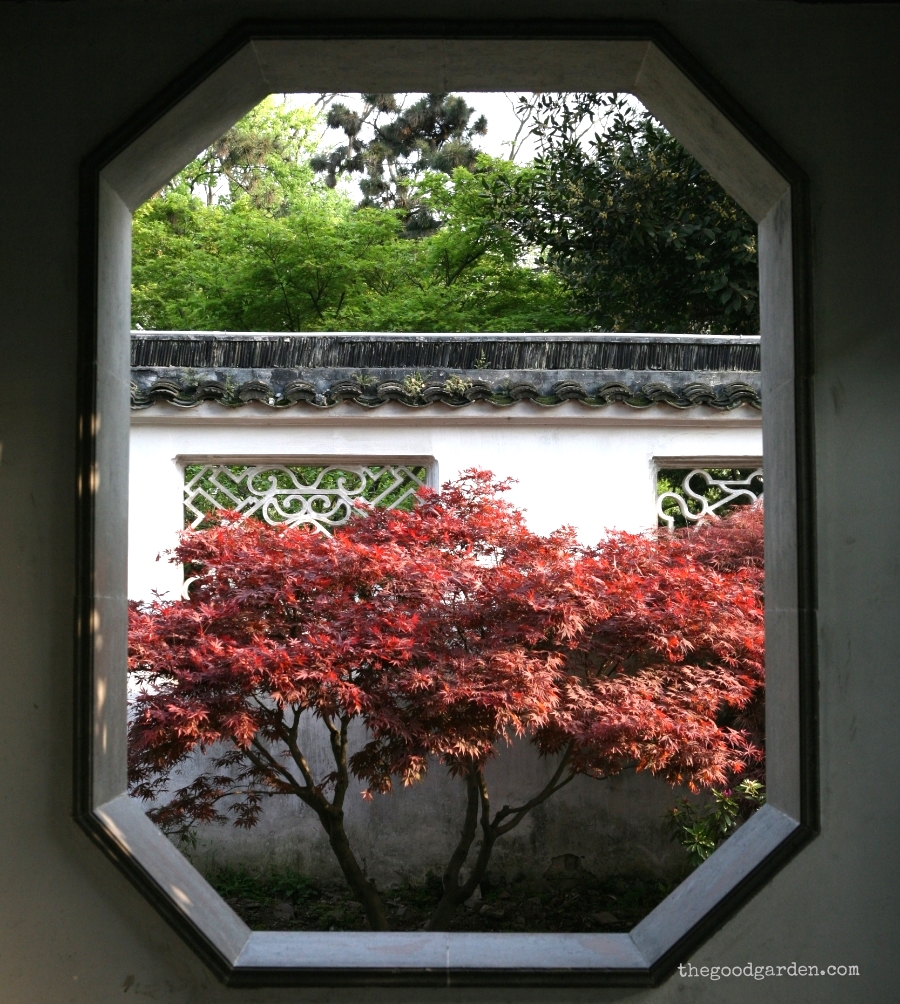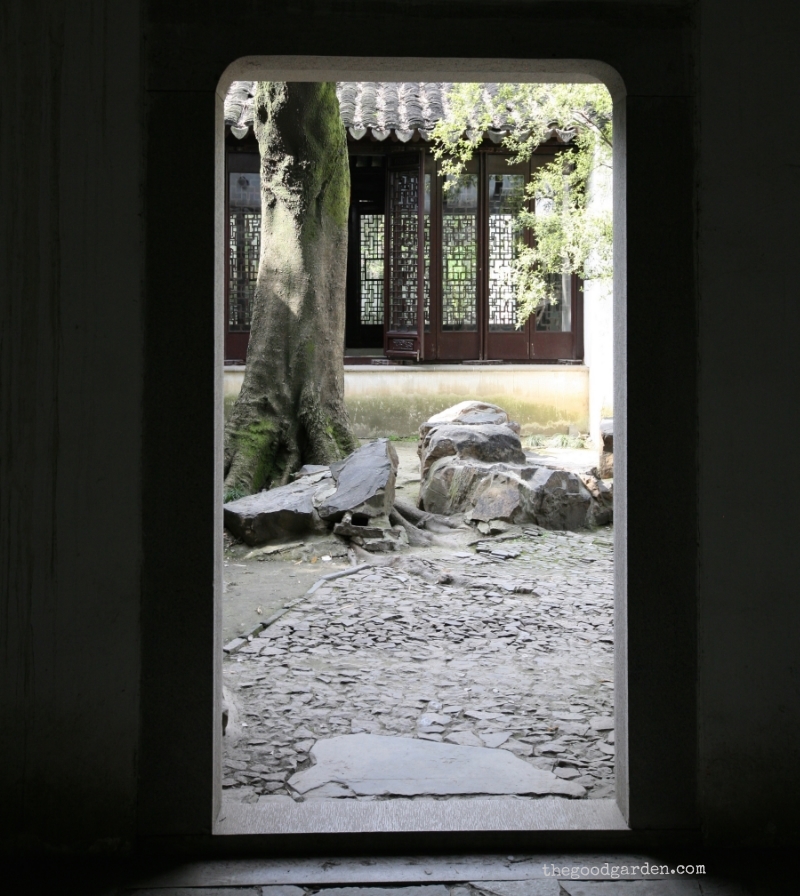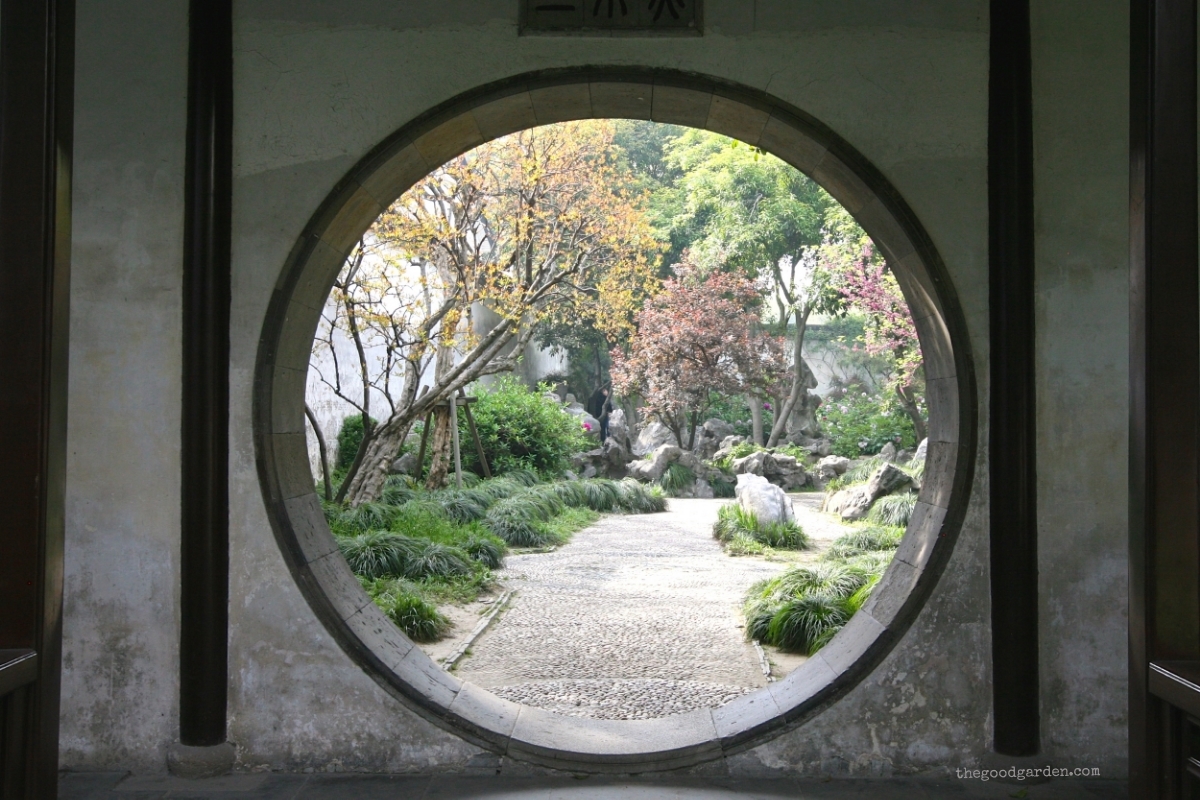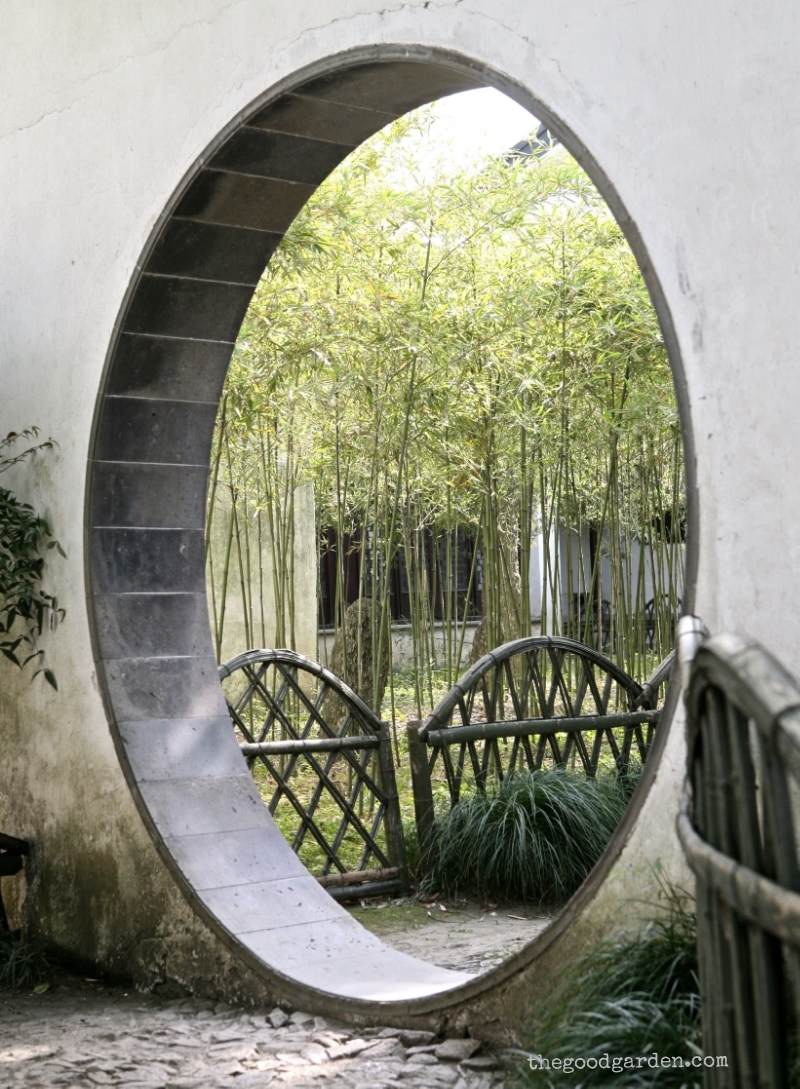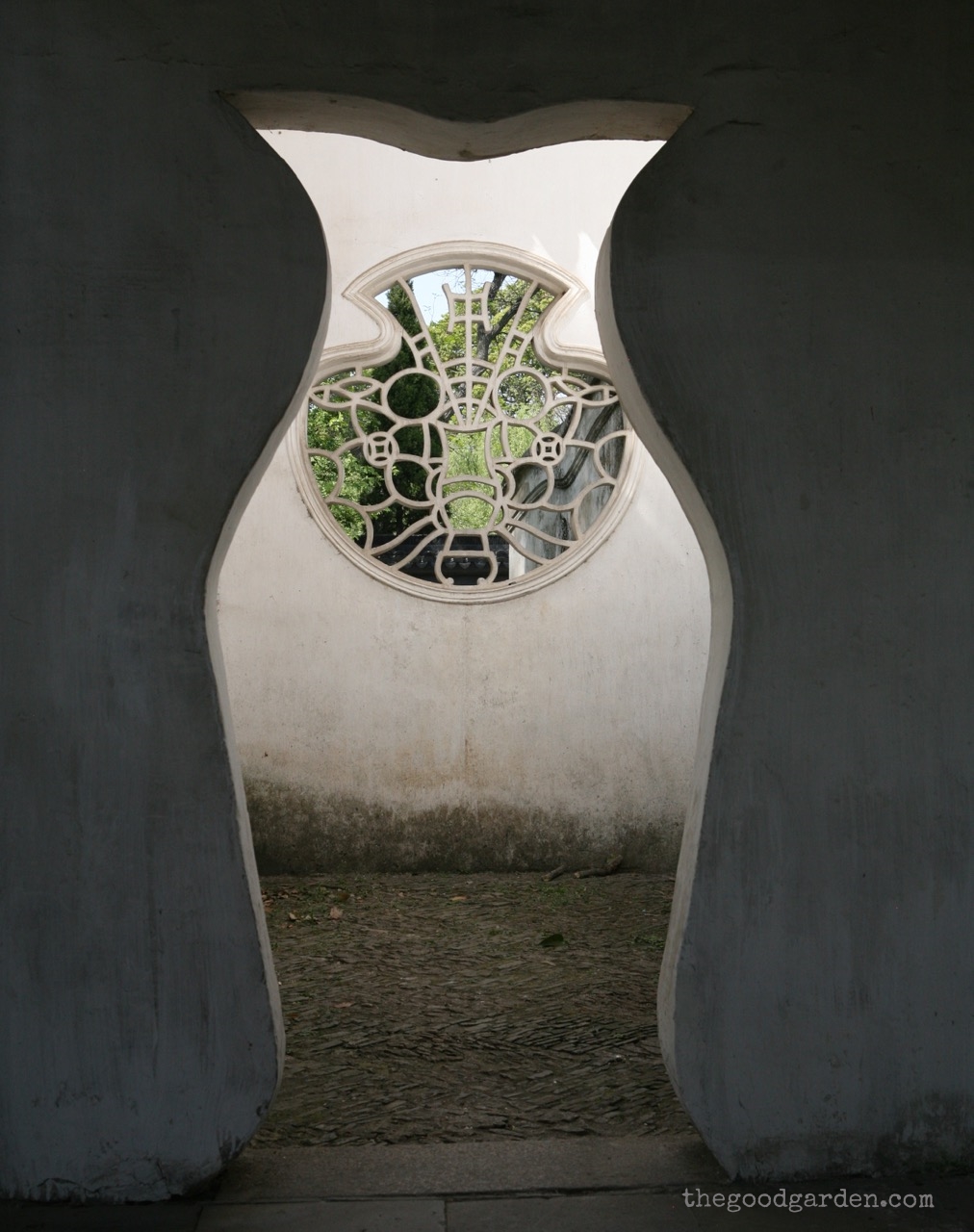Doors and windows play an important role in the Chinese garden. They frame compositions of plants, mark the separation between sections, and guide us through the landscape. Their shape, width, and construction have been refined over millennia based on what works.
Around 1630, Ji Cheng wrote one of the earliest garden guides, The Craft of Gardens, where he provides detailed tips on how to create a garden in the Chinese tradition. His work includes a very detailed section on appropriate doorways that is a delight to read.
Cheng was trained as a painter; he came to garden design in his middle age. He explains in his preface that he became known for designing gardens that incorporated mountains, lakes, and structures; his gardens “collected together in [a] small space all the famous [natural] sights.” In his spare hours, he collected his observations and turned them into a book.
His audience was the emerging wealthy merchant class of the time. Alison Hardie’s translation of Ji Cheng’s work is an excellent addition to anyone’s garden book library. In her preface she summarizes Cheng’s approach, explaining that he, “emphasizes the importance of basing the garden design on existing nature and features… and uses poetic descriptions to build up an atmosphere which will inspire the would-be designer to create a garden that can express … emotions”.
The Craft of Gardens is organized around 4 themes: Situation, Layout, Buildings, and Scenic Features.
Within the 'Building' section, Cheng shares advice about doorways as an important element in any garden. They invite exploration and movement through the garden. As openings in a wall, they provide a peek into what’s on the other side, while reinforcing the sense of shelter provided by a garden wall. Cheng wrote, “Not only can a doorway give a new look to a house, it can make a garden look more elegant too … thoughts can be aroused by a sudden vista, and inner feelings can be better expressed.”
The scholar gardens in Suzhou, China likely inspired Cheng. A few examples are shown above:
The Lingering Garden highlights the use of several moon gates. This landscape was created in the 1590’s by Xu Tai. Through a series of intimate courtyards and garden rooms, the design focuses on harmony and balance, seamlessly integrating buildings, stonework, and plant material.
At the Humble Administrator’s Garden, an octagonal window frames a specimen Japanese red Maple tree. The whitewashed wall with lattice windows provides a neutral backdrop and a glimpse into the larger garden beyond. Wang Xianchen, a retired government official, started to build the garden in 1509. This traditional scholar’s garden is made up of a series of naturalistic vignettes that draw design inspiration from the region’s most beautiful scenery. At nearly 13 acres, it is the largest and most famous of the Suzhou gardens.
A doorway and moongate frame view at Surging Wave Pavilion Garden. The Surging Wave Pavilion Garden is the oldest garden in Suzhou, dating from 1044. Poet Su Shunqing built it on top of what had been an imperial flower garden. The 4-acre garden is bisected by a large, man-made hill surrounded by winding corridors.
Don't miss these images as stunning notecards.
Suzhou is a canal city on the shores of the Yangtze River where retired government officials retired to devote themselves to the four great Chinese arts: poetry, painting, music, and garden making.
Roof detail at the Lingering Garden. Suzhou, China.


